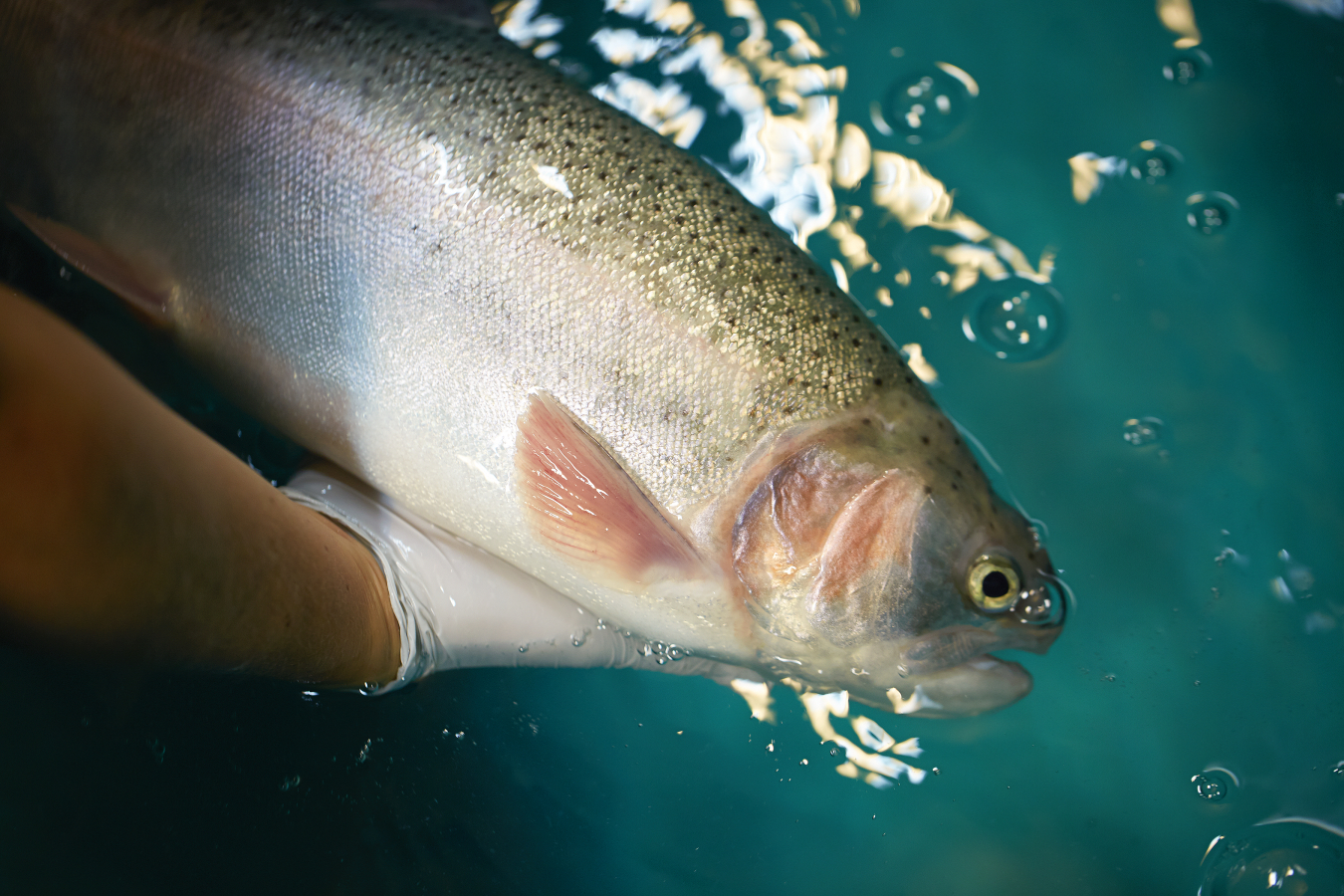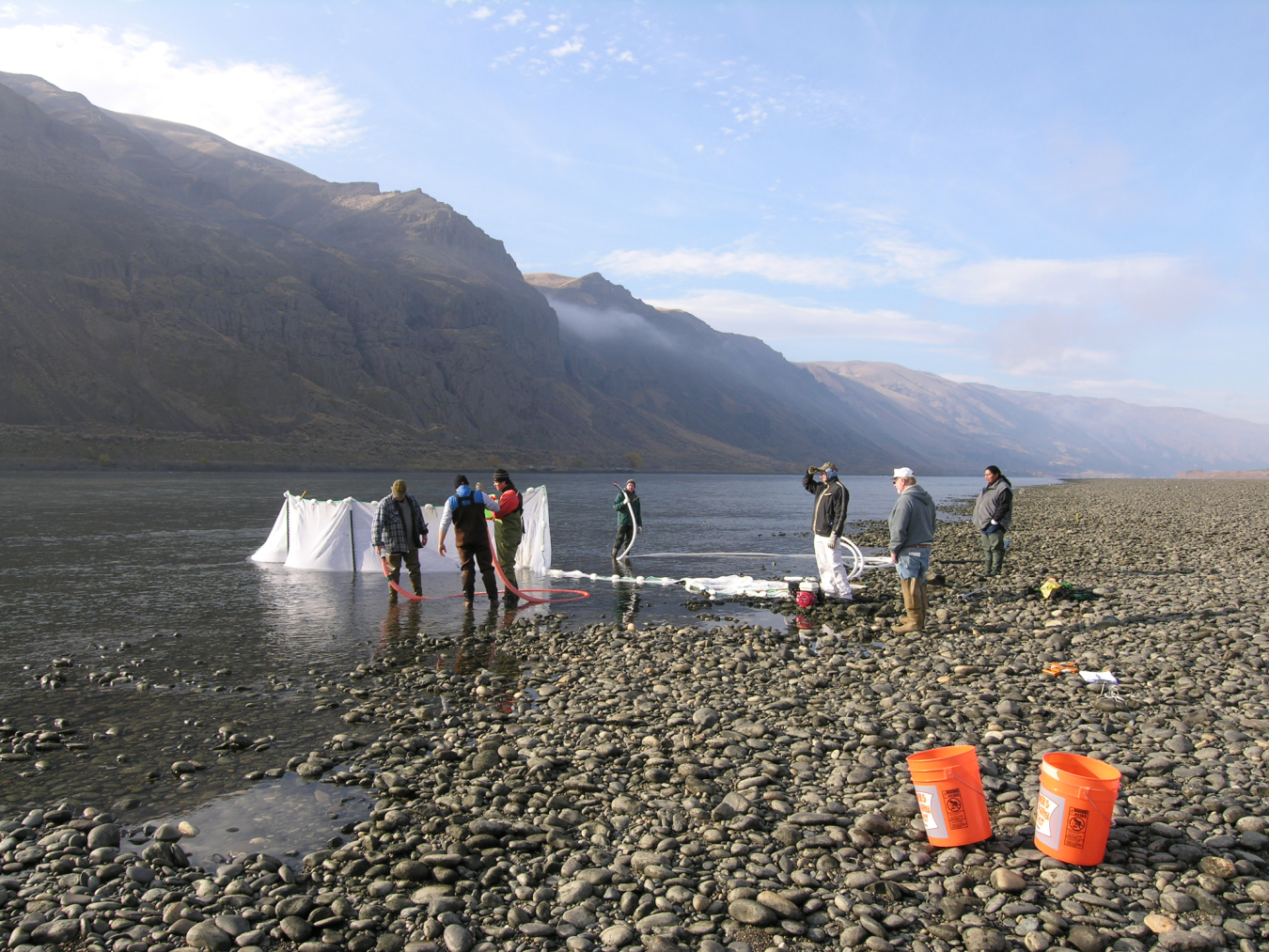By Erik Hyrkas, former EERE Communications team member

A rainbow trout, one of several species of fish being tracked using PNNL's new injectable, self-charging acoustic fish tags. These devices allow scientists to research how fish migrate through waterways when encountering hydrokinetic dams.
If you’ve ever wondered how fish swim, like software applications for smartphones—there’s a study for that. In order to understand how fish swim through rivers, Pacific Northwest National Laboratory (PNNL) has developed an injectable tracking device, known as an acoustic fish tag, with a self-charging battery.
Funded by the Energy Department, this project is part of a long-term mission to contribute valuable research on fish migration through waterways when encountering hydroelectric dams. The key purpose of the study is to see whether or not fish become injured or hindered by the presence of hydroelectric devices.
“We began developing small acoustic transmitters for fish tracking in 2001,” said PNNL’s Daniel Deng, chief scientist, Energy & Environment Directorate. “From the start, the tags needed to be small enough to use on juvenile salmon without impeding the motion or behavior of the fish. As technology advanced, we’ve been able to steadily shrink the size of the tags while adding new tracking capabilities. The first tags, released in 2005, needed to be surgically implanted.”
By 2014, PNNL had developed a micro, 3-volt lithium battery as small as a grain of rice. This engineering shrunk the acoustic fish tag down producing the world’s first fish tag capable of being injected with a syringe. The tiny tag is considerably smaller than those used on other animals and dramatically speeds up the tagging process (75 seconds per implant). However, due to the size of the battery, longevity is limited to a month.
It wasn’t until 2015 when the latest development was tested, self-charging tags, a revolutionary development that used the movement of fish to power and recharge batteries.
“The self-charging capability of these tags really sets them apart from current tracking tags,” said Deng. “We used a flexible piezoelectric beam to harvest the mechanical energy from the swimming motion of the fish. Previous tags relied solely on a battery to power the tag. When the battery ran out, the tag stopped transmitting a signal.”

PNNL’s scientists developed two versions of the self-charging tag. One uses a capacitor that is charged as the fish moves. The fish has to be moving for the tag to have enough power to send a signal. The second version uses a battery that stores energy from the fish’s movement. Once the energy is depleted, the fish’s movement will recharge the battery to full capacity.
The technological evolution to these more advanced tags has yielded many ecological research benefits.
“We get a much more complete view of the effects of dams and other waterway structures on fish behavior. Rather than just a month or two of data, we could receive well over a year’s worth of information,” said Deng. “Some fish, such as sturgeon, lamprey and eels, have longer migration patterns. Self-charging tags allow us to see the impact of river obstructions and ferry terminals much clearer and across a broader range of fish species.”
In addition, this technology provides dam operators and utilities more accurate data that they can use to improve the environmental performance of hydroelectric dams. The data can also be used to influence the design of emerging hydropower technologies systems.
In the meantime, Deng and his team are continually working on improvements. An even smaller tag is being developed for juvenile eels and lamprey, while a longer-lasting tag was made for juvenile sturgeon last year. Testing is still underway on the self-charging tags and, according to Deng, “short-term results are promising.”
Amped Up! Magazine is the Office of Energy Efficiency and Renewable Energy’s publication that highlights breaking technologies and achievements in renewable power, energy efficiency and sustainable transportation that influence global change toward a clean energy economy.

Salmon researchers at Vernita Bar, a spawning site for fall Chinook salmon in the Columbia River in Washington.
